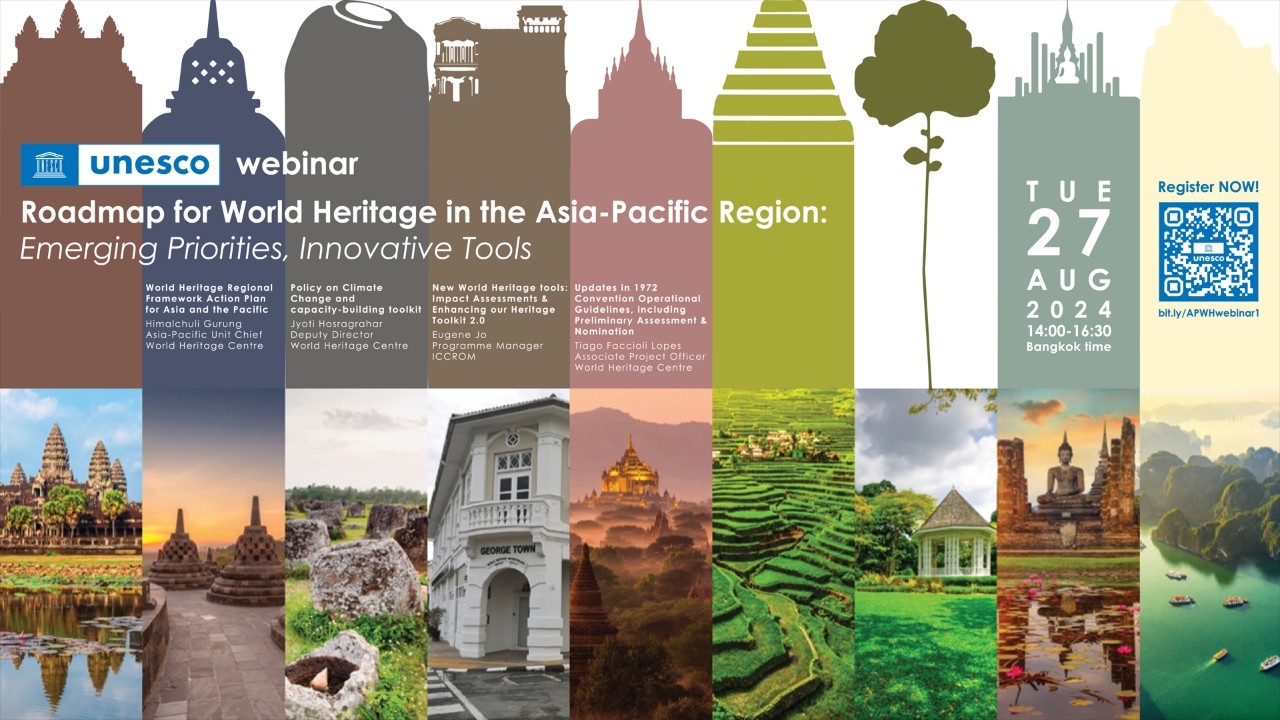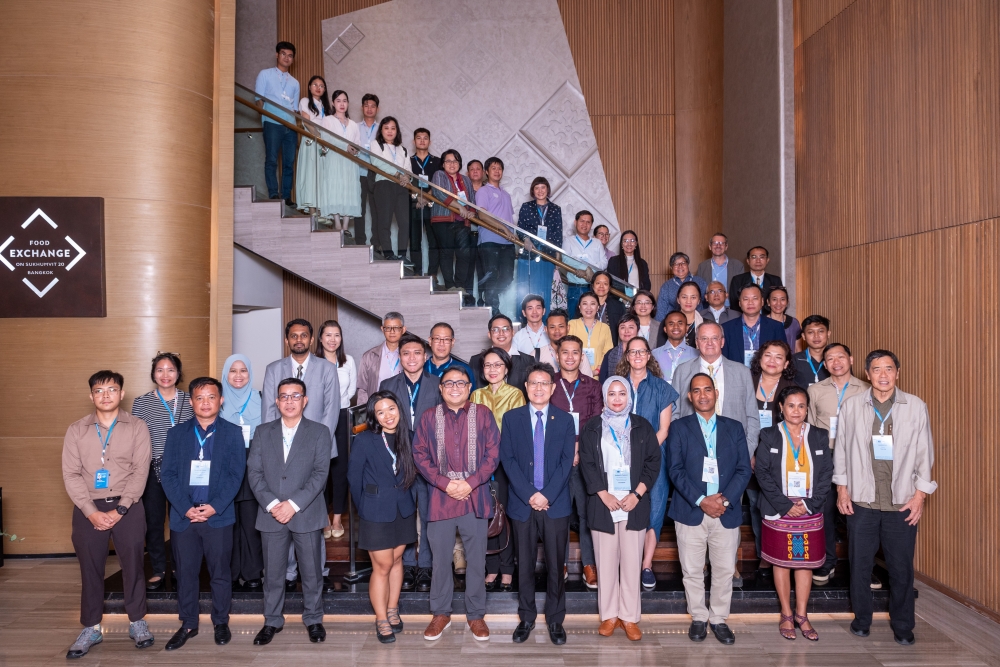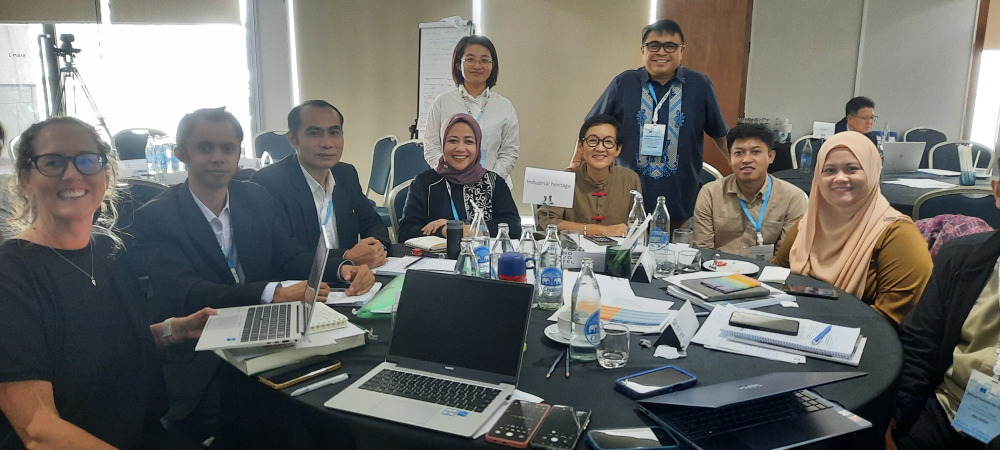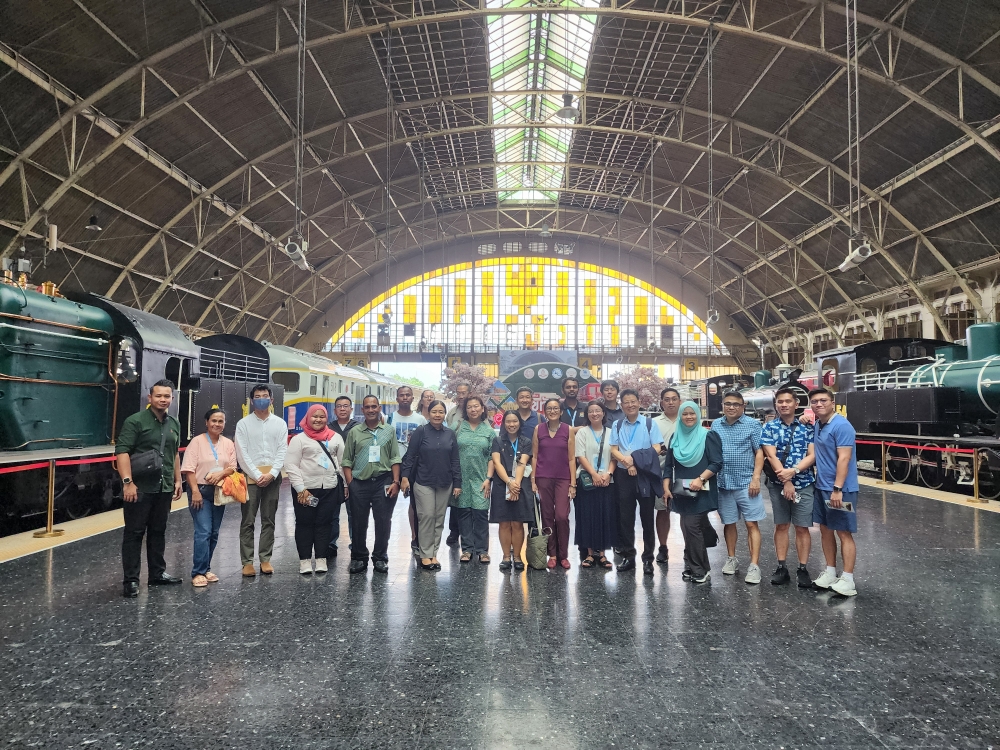

Group Photo
The aims of the training are to strengthen the use of the Tentative List as a tool for strategic planning in identifying, inventorying and prioritizing heritage sites within each country; optimize the success of future nomination efforts; and promote sub-regional collaboration and harmonization to ensure greater alignment with the Global Strategy for a representative, balanced and credible World Heritage List.
Experts were invited to give the presentation on the basic knowledge related to World Heritage Convention, and updates of the nomination process. In addition, thematic lectures in gap analyses and emerging themes in the sub-region including industrial heritage, 20th century heritage, human evolution sites, living landscapes, geological heritage and marine heritage are presented. Participants were divided into 6 thematic groups to follow the process of reviewing and updating Tentative List. Ideas are sharing to seek the possibility of harmonize the sites on Tentative List in the sub-region.

on the scene
Critical questions were raised such as how to harmonize among different countries. Dr. Jing and other experts inspired participants by showing the cases. For example, for natural heritage, it can link to ecosystem or the other international Programme as Man and Biosphere (MAB) Reserves, Gero Parks, RAMSAR; for cultural heritage, similar approach can be used and themes can be referred to identify the possibility of harmonization.

Industrial Heritage Group

group work
Participants will update and harmonize the Tentative List in the following month and present online in October. In March 2025, the 2nd training on World Heritage Nomination will be organized by UNESCO Jakarta.

Hua LamphongRailway Station
